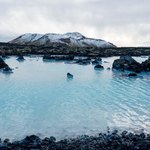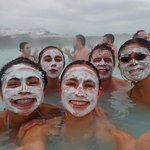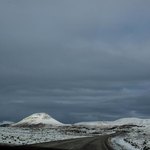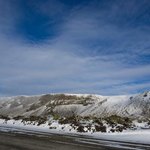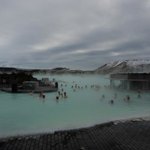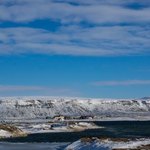Below you will find more information about traveling to Iceland in winter, including itineraries for self-drive tours offering you the most flexibility (with winter driving tips), or great smaller group tours if you prefer to leave the winter driving to the experts.
When you’re ready to start planning your trip, Get Started by chatting with one of our trusted local experts who can answer your questions and create the perfect winter trip for you.
When Is Winter Coming to Iceland?

The “Winter Season” or “off season” in Iceland roughly covers November to April. At this time daylight is more limited and many day tours and activities either don’t take place at all or have much more limited hours. Some activities don’t even start up again until May or June and stop mid-September (such as kayaking and rafting).
While you will have less time to squeeze in all you want to do, you should take advantage of the season where everything seems more calm, quiet, and when the tourist crowds are at their smallest. Plus, the winter is the best time to see the Northern Light.
Traveling early-November or late-March offers a lot: crowds are still small, you can still have the chance to see the northern lights, and you still have enough daylight to do a lot each day.
Iceland Weather and Daylight
Temperature and Precipitation

Iceland doesn’t get as cold in the winter as many people think. Lows are typically just below freezing. High winds can cause it to feel much colder than it actually. Dress in layers and wear a good wind jacket, hat, and warmth for your ears.
Sunrise, Sunset, Hours of Daylight

Due to Iceland’s northern latitude, winter days are short and winter nights are very long. Here’s what you can expect for sunrise, sunset, and daylight throughout the year. Dawn and dusk last longer as well, and snow reflects the light so it won’t be completely dark outside of the daylight hours.
Chat with a local specialist who can help organize your trip.
Popular Winter Activities in Iceland
Northern Lights: The northern lights are never guaranteed since they depend on clear weather, solar activity, and dark skies. You will maximize your darkness during winter, increasing your chances to see the northern lights. You can hope to see it from your hotel (away from the lights of Reykjavik), or by joining a northern lights hunt tour. The super jeeps can drive you to places no other vehicles can access, giving you the most flexibility.
Check the Northern Lights forecast here.

Snowmobiling: Snowmobile over snow fields and on top of glaciers. Tours leave from several different locations, allowing you to add on a couple-hour excursion to most itineraries.
Ice Caves: The Crystal Ice Cave in Vatnajökull Glacier is typically open for tours mid-November through March. Here you can explore the ice sculptures and formations in the blue light. For a different experience, try the man-made ice cave at Langjökull Glacier, it’s open for a longer season and is recreated each year because the slowly-moving glacier causes the straight tunnel to move.
Glacier Walk / Ice Climb: these activities are available year-round and are a unique Icelandic experience. Strap on some crampons to hike along the ice contours of Iceland’s glaciers. If you’re really feeling adventurous join an ice climb where you can pull yourself up the side of some of the smaller cliffs.
Dog Sledding: Dog sledding in Iceland is one of the most popular activities people come to do. Meet the dogs and ride on the sled for about 1 hour over the snowy fields.
Snowshoe, downhill ski, cross-country ski: Many areas offer more typical winter sports. For great skiing, head to the Westfjords, the north around Akureyri, and the eastern fjords where you can ski snowy mountains while you look down on the ocean below.
Super Jeep tours: Many smaller roads are closed to normal traffic during the winter, even most 4WD cars cannot access some of the highlights. Join a super jeep tour and drive through the deep snowpack to see enjoy some of the remote areas all to yourself.
Winter Driving in Iceland
Driving in Winter can be difficult if you are not used to winter conditions and don’t take the necessary safety precautions. If you are experienced, check road conditions and weather, and pay attention to warning signs then you should be fine.
In some areas, a few roads are not cleared or maintained during the winter and you may need to make a detour. (See here for a map of non-maintained roads, the roads marked in red are not maintained)
The main concern with winter driving is black ice, especially when combined with strong gusts of wind. Check reports for icy road conditions, wind strength (temperatures and winds reported for most passes), and make sure you drive a car with 4WD and winter tires. In snowy conditions, take your time and don’t rush. Iceland’s scenery is best enjoyed slowly anyways.
Check the Road Conditions here.

How to get around Iceland in Winter
If you are not used to driving in these conditions, don’t risk it. There are plenty of other ways to get around Iceland in the winter: by multi-day small-group tours, private tours, and modified super jeeps that can drive through snow and onto glaciers.
We work with many high-quality tour operators and can work with you to create a customized trip.
If you want remain flexible with your own winter-capable car but prefer to limit the driving you do, consider exploring the Snaefellsnes Peninsula, which many concentrated sights, or fly to Akureyri in the north and explore Lake Myvatn which gives you a taste of volcanoes, geothermal hot springs, caves, lava fields and more only 1 hour away from Akureyri.
Holidays in Iceland

Christmas
Christmas is the longest holiday in Iceland, starting on December 23 and lasting until January 6. This is also the darkest time in Iceland, and the festivities make an extra effort to add lots of light (also on New Year’s Eve). Icelanders decorate their houses and Christmas trees with bright lights, which are further reflected when there is snow on the ground. Many shops are closed from December 24 to December 27, when people celebrate together with friends and family.
New Year’s Celebrations
New Year's Eve is a huge party in Iceland. If you are in Reykjavik you won't want to miss the celebrations. In Iceland, there are no limitations on how many fireworks you can purchase, and no rules on when and where you can fire them on over New Year's. Therefore this night will forever linger in your memory, with the climax around midnight and continuing into the early hours of the morning. You can attend one of the bonfires in the city to really get acquainted with the Icelandic New Year’s traditions.
Yule Lads (jólasveinarnir, also called “Yuletide-lads or Yulemen”)
Iceland doesn’t have just one “Father Christmas” or Santa Claus; Instead, Icelandic children are visited by 13 Yule Lads. Children place a shoe at the window, and for the 13 nights leading up to Christmas Eve a different Yule Lad visits to give gifts (if they were good) or rotting potatoes (if they were bad). The Yule Lads are the sons of Grýla and Leppalúði, who of the most-feared ogres. In Older times their purpose was to strike fear in the children so that they were always well-behaved, and were depicted as wearing older Medieval clothing. Today they are mostly friendly and resemble modern-day depictions of Santa Claus with a big red and white coat.
Yule Cat (Jólakötturinn)
According to old Icelandic folklore, every Icelander must receive new clothes before Christmas Eve. Those who received no new clothes would be preyed upon by the large and vicious yule cat, who lurks around in the snow on Christmas Eve. The threat originates from farms who wanted to incentivize works to finish processing wool before Christmas time. Those who finished were rewarded with new clothes; those who did not were eaten by the yule cat.
Sun Pancakes (Westfjords Tradition)
The Westfjords in the far northwest of Iceland receive very little sunlight in the Winter months. The high mountains around Isafjordur block the low sun, and it is not visible from the town for around 60 days each December and January. It’s not completely dark, more like dusk from 11am-4pm (on the plus side there is more time to see the Northern Lights).
January 25 is sóldagur (“Sun Day”), the first day where the sun shines for a couple minutes on Sólgata (“Sun Street”). To celebrate, everyone gathers on the street to soak up the brief sun rays, and then cook and eat “Sun Pancakes”, served with cream and rhubarb jam.

